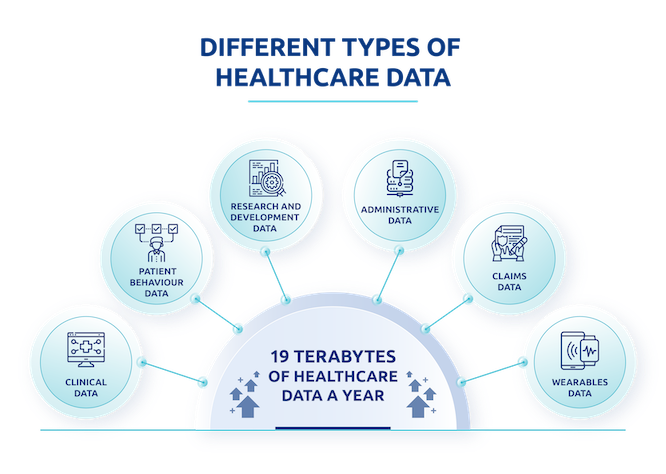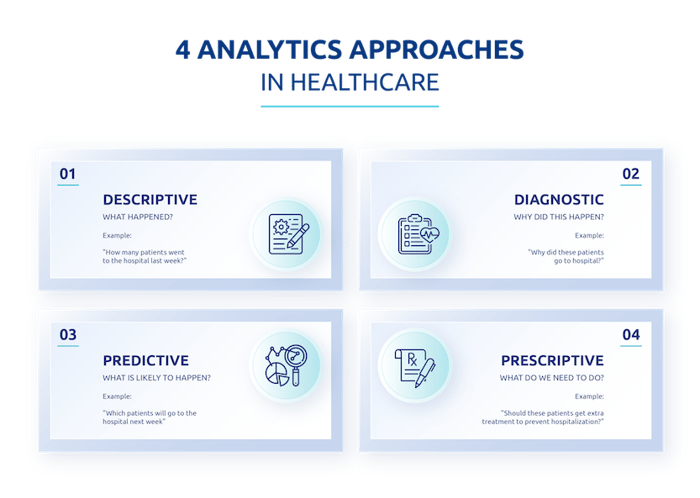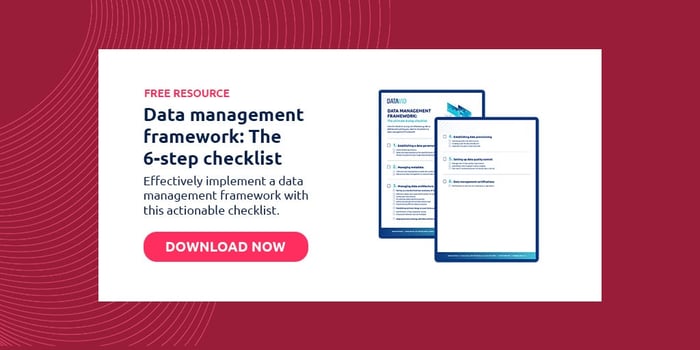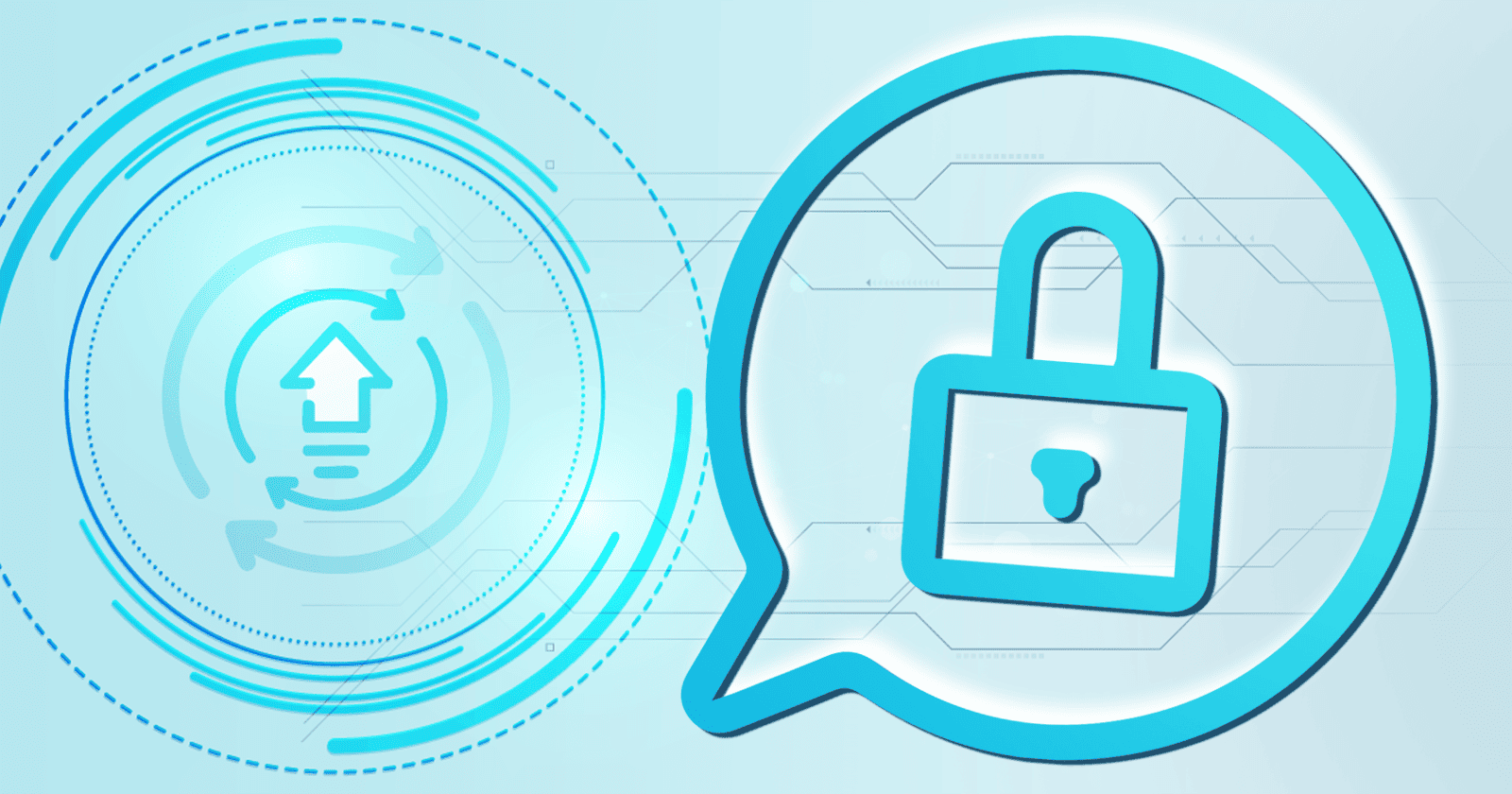6 minute read
How data-driven approach is revolutionizing the healthcare industry
Learn about data-driven healthcare and how healthcare providers can gather & analyze data to improve patient outcomes & improve clinical decision-making.
Table of contents
Healthcare providers gather and analyze vast amounts of data, but they are still learning how to leverage this information most effectively.
The data-driven approach is emerging as a game-changer that can transform and support the healthcare industry, improving patients' outcomes, enhancing clinical decision-making, and reducing costs.
From making decisions and improving performance to developing business strategies, more and more healthcare industry players are adopting new data-driven rules.
In this blog post, we'll explore how data-driven healthcare works, its benefits, and its challenges using real-world examples.
What is data-driven in healthcare?
Data-driven means powered by data. When you make a data-driven decision, you base your decision on the data you collected and analysed.
A business that implements a data-driven approach uses hard facts and comprehensive data analysis technologies to gain insight into different aspects of its operations and customer behaviour.
For example, imagine a dental clinic (ABC) with patients complaining about long waiting times.
The clinic needs to solve the problem. It gathers data about the busiest times at the clinic and learns that most patients come between 4 p.m. and 6 p.m.

The clinic can use this data to make a data-driven decision. There are at least two options:
- Bring another dentist to the clinic during the busiest hours
- Suggest other appointment times for patients who want to come between 4 p.m. and 6 p.m.
Gathering and analysing information are key to making data-driven decisions.
Every year, the healthcare sector produces at least 19 terabytes of clinical data alone, and the numbers are growing exponentially. In this sea of data, there is not just clinical data. There are also different types of data, such as:

- Patient behaviour data: learning how patients use medical services can help healthcare service providers make hiring decisions, adjust their clinic operations, improve patient satisfaction, and enhance the quality of healthcare.
- Research and development data: collecting and analysing data during clinical studies and trials can help identify the effectiveness of drugs and treatments.
- Administrative data: healthcare service statistics, treatment frequency, number of emergency room visits, and similar information can help healthcare providers streamline operations and improve service quality.
- Claims data: data collected from insurance claims can help spot treatment errors, identify trends in patient needs, and encourage preventive measures.
- Wearables data: data collected from electronic devices can help design effective medical treatments and prevent medical emergencies in real time.
Leveraging this data for data-driven decision-making helps healthcare industry players stay on top of the ever-changing patient needs, improve their experience, identify new treatments faster, and more.
How data is changing the healthcare sector
Only a few years ago, 97% of hospital data remained unused.
Today, most organisations are taking advantage of the wide variety of data produced by patients, medical devices, insurance claims, studies, and other sources to improve medical technologies and performances.
Some recent examples are X-ray data and EHR records.
X-Ray data
X-rays are a rapid and painless technique extensively utilised to generate images of the internal structures of objects or bodies, particularly useful for examining bones and identifying various medical conditions.
Typically conducted by trained radiographers in hospital X-ray departments, X-rays may also be performed by other healthcare professionals (e.g., dentists).
After analysing their data, a team of American clinicians discovered that the X-ray rejection rate was around 25%, which was high.
To solve this problem, software engineers studied X-ray procedures to determine what led to this extremely negative result. They developed an application that pinpoints the root causes of rejected images. They discovered the problem was that images were unreadable due to poor image quality or patient positioning.
This led to software development that minimised manual work and reduced the number of rejections.
EHR records
Electronic health records (EHRs) serve as official health documents for individuals, commonly shared across various facilities and agencies.
With the growing digitisation of patient information and increasing consumer demand for mobile access to their health records, EHRs play a crucial role in healthcare by providing convenient and widespread access to comprehensive medical information.
In a recent study, researchers looked at the EHR records of patients who underwent a total knee arthroplasty (knee joint replacement). The study aimed to develop a data-driven health management approach using electronic health records (EHR) to identify and visualise overlapping patient groups with similar disease risks, in this case, risk of re-operation after knee arthroplasty.
By analysing these records, they identified how lifestyle factors contributed to this risk. The model demonstrates the potential for personalised recommendations to support patient and physician decision-making. This theoretical model introduces a way to positively influence patient behaviour and improve healthcare decision-making based on real-world EHR data.
Health analytics and patterns
Population health analytics based on treatment patterns, emergency room visits, drug consumption, and hospitalisation allow the health system to discover emerging healthcare trends. This, in turn, makes it possible to predict the system's demand.
Deloitte predicts that by 2025, adopting scientific and technological advances coupled with robust data analytics will reduce risks and improve prevention. The public health system will rely heavily on data and AI-based technologies to focus on high-risk populations and arrange effective preventive care.
Analytics approaches in healthcare
The four approaches to analytics in healthcare are:

- Descriptive: evaluates historical information and identifies patterns (e.g., number of patients that drop out of rehabilitation therapy over a year).
- Diagnostic: allows researchers to understand why a certain event happened (i.e., why patients drop out of rehab therapy)
- Predictive: provides information about what may happen based on data (i.e., how many patients will likely drop out of rehab therapy next year).
- Prescriptive: It helps understand what needs to be changed to improve the outcome (e.g., educating patients about the benefits of rehab therapy).
The most important benefit of data-driven processes in healthcare is the ability to make predictions. With the right approach to data gathering and analytics, patients' needs can be predicted, and preventive measures can be implemented.
For example, a 2019 study published in The American Journal of Managed Care demonstrated the ability of ML-powered tools to identify people with a high risk of getting a respiratory infection. This information can be used to reduce the number of emergency room visits and hospitalisation by arranging preventive measures.
Benefits of data-driven healthcare
The data-driven approach to healthcare operations and decisions is integral to successful operations. If the healthcare organisation has access to high-quality data and effective analytics tools, it can achieve impressive results.
Successful medical research
Medical researchers have access to many clinical data sources, including:
- EHR and other electronic medical records
- Personal health records
- Public health records
Analysing this data can help researchers improve clinical processes, increase diagnosis accuracy, gain new insights into the causes of diseases, and make connections between patient behaviour and treatment success.
Improved patient outcomes
Patient data can help healthcare providers make data-driven decisions about patient care. Analysing patient data in real-time can help healthcare providers lower readmission rates, minimise treatment errors, identify at-risk populations, and prevent medical emergencies.
They leverage data from:
- Patient surveys
- Wearables
- Clinical tests
- Public health records
By studying this type of data, healthcare providers can identify the most effective treatment patterns, help patients improve their quality of life, and streamline patient satisfaction.
Improved quality and efficiency of healthcare system
Healthcare efficiency is an ongoing issue that providers worldwide are trying to improve. By taking a data-driven approach, it's possible to improve patient experience and healthcare system quality.
For example, data analytics can enhance:
- Employee scheduling
- Emergency preparations
- Administrative tasks
- Financial management
- Compliance
With data-driven decisions, healthcare providers can increase hospital capacities, enhance project management, encourage cost-effective use of technologies (including data discovery and analytics tools), and increase positive patient outcomes.
Challenges of data-driven healthcare
While highly effective, data-driven healthcare comes with several challenges.
Data security
The key challenge of data-driven healthcare is data security. Whenever digital data is involved, there is a chance of it falling into the wrong hands. That's why the medical industry players must comply with some of the toughest data protection policies.
Despite these efforts, cybercriminals are constantly targeting medical records, and these attacks are often successful. The costs of data breaches in healthcare are the highest of any industry. In 2022, they exceeded $10M, and they are rising every year.
Artificial intelligence is making it possible to improve patient access to healthcare data. While this can streamline healthcare industry operations, improve patient satisfaction, and reduce treatment costs, this approach increases the risk of data breaches.
Data quality
Another challenge of data-driven healthcare is data quality. Due to robust security measures and privacy policies, high-quality data is often inaccessible to research and development teams.
In the future, the healthcare industry players must find more opportunities to extract high-quality data without handling private components.
Data-driven vs data-informed
Implementing data, AI, and ML in healthcare decisions creates an unexpected challenge. Due to the prevalence of statistical models, individual health norms may be overlooked. While medical norms are important for making treatment decisions, it's imperative to take a personalised approach to each patient.

That's where the data-informed approach comes in. The data-informed decision isn't just based on pure data-driven insight. It combines data with human experience and expertise to make the most effective decision.
How to become a data-driven healthcare organisation
Becoming a data-driven healthcare organisation is important for leveraging huge volumes of data and not losing revenue-generating opportunities.
Here are the first steps to becoming a successful, data-driven healthcare organisation:
- Identify data-related goals and objects
- Evaluate how much data your organisation is currently using
- Determine which data can help you achieve business goals
- Analyse your current data structure (including data sources and analytics tools)
- Integrate quality data sources
- Eliminate data silos
- Encourage a data-driven work environment
Data-driven healthcare is a multifaceted approach that may require a reinvention of many business processes within the organisation. By implementing the right tools, it's possible to stay ahead of the competition and pursue both local and global healthcare goals.
Understanding the power of data-driven healthcare
Data-driven healthcare involves leveraging high-quality data to make important business decisions. It helps with research, studies, medication development, treatment improvement, and patients' quality of life.
Since private and public healthcare systems continuously face various challenges, the data-driven approach is gaining momentum quickly. In the next decade, with the help of AI and ML-driven technologies, data analytics is likely to drive significant improvements in the industry.
Frequently Asked Questions
What is a data-driven approach in healthcare?
A data-driven approach in healthcare involves using quality data to make important decisions to improve patients' experience, medical research, and financial management.
What is a data-driven hospital?
A data-driven hospital is a hospital that relies on quality data to make important decisions about compliance, capacity, finances, and patient care.
What are the 3 big sources of healthcare data?
The three big sources of healthcare data are medical records (public and private), survey data, and clinical research.




